PERCEPȚIILE PACIENȚILOR DESPRE SIGURANȚA LOR ÎN STAȚIONAR
DOI:
https://doi.org/10.52692/1857-0011.2023.3-77.02Cuvinte cheie:
sondaj, pacienți, spital, percepție, siguranță, drepturile paciențilorRezumat
Pentru a analiza modul în care pacienții internați percep propria lor siguranță, au fost analizate datele unui sondaj realizat cu ajutorul unui chestionar special dezvoltat. A fost efectuată o analiză detaliată a componentelor structurale ale satisfacției pacienților, identificând domeniile potențiale în care se poate îmbunătăți securitatea pacienților, inclusiv respectarea protocoalelor de siguranță și implicarea activă a pacienților în luarea deciziilor de tratament. Rezultatele obținute subliniază complexitatea și multilateralitatea problemei securității pacienților spitalizați și indică necesitatea unei abordări complexe și țintite pentru îmbunătățirea acestei arii importante de practică medicală.
Referințe
Beauchamp T.L., Childress J.F. Principles of biomedical ethics. 7th ed. New York: Oxford University Press; 2013.
Brown M.T., Bussell J. Medication Adherence: WHO Cares? Mayo Clinic Proceedings. 2011;86(4):304-314.
Chhanabhai P., Holt A. Consumers are ready to accept the transition to online and electronic records if they can be assured of the security measures. MedGenMed Medscape General Medicine, 2007, 9(1), 8.
Doherty C., Stavropoulou C. Patients’ willingness and ability to participate actively in the reduction of clinical errors: a systematic literature review. Soc Sci Med. 2012;75(2):257-63.
Donabedian A. The quality of care: How can it be assessed? JAMA. 1988;260(12):1743-1748.
Doyle C., Lennox L., Bell D. A systematic review of evidence on the links between patient experience and clinical safety and effectiveness. BMJ Open. 2013;3: e001570.
Faden R.R., Beauchamp T.L., Kass N.E. Informed consent, comparative effectiveness, and learning health care. N Engl J Med. 2014;370(8):766-8.
Fiscella K., Meldrum S., Franks P. et al. Patient trust: is it related to patient-centered behavior of primary care physicians? Med Care. 2004;42(11):1049-55.
Franke T., Sims-Gould J., McKay H., Milosavljevic S., Feldman F. It’s almost like banking a cheque: The experience of older adults pre-and post-knee or hip surgery. BMC Geriatr. 2019;19(1):43.
Frankel A., Haraden C., Federico F., Lenoci-Edwards
J.A Framework for Safe, Reliable, and Effective Care. White Paper. Institute for Healthcare Improvement and Safe & Reliable Healthcare; 2017.
Ghid privind aplicarea procedurii de comunicare și consiliere a pacienților. MSMPS al RM. Chişinău, 2018. 39 p. http://msmps.gov.md/wp-content/uploads/2020/06/GHID-privind-aplicarea-procedurii-de-comunicare-%C8%99i-consiliere-a-pacien%C8%9Bilor.pdf
Gillon R. Medical ethics: four principles plus attention to scope. BMJ. 1994;309(6948):184.
Giordano L.A., Elliott M.N., Goldstein E., Lehrman W.G., Spencer P.A. Development, implementation, and public reporting of the HCAHPS survey. Medical Care Research and Review. 2010;67(1):27-37.
Glanz, K., Rimer, B. and Viswanath, K. (2008) Health Behaviour and Health Education: Theory, Research, and Practice. 4th Edition, Jossey-Bass, San Francisco.
Harbarth S., Sax H., Gastmeier P. The preventable proportion of nosocomial infections: an overview of published reports. Journal of Hospital Infection. 2003;54(4):258-266.
Informed consent. Guidace for Applicants. Etical Review in FP7. Luxembourg: Publications Office of the European Union, 2013 https://ec.europa.eu/research/participants/data/ref/fp7/89807/informed-consent_en.pdf
Kohn L.T., Corrigan J.M., Donaldson M.S. To err is human: building a safer health system. National Academies Press; 2000.
Makary M.A., Sexton J.B., Freischlag J.A., Millman E.A., Pryor D., Holzmueller C., Pronovost P.J. Operating room briefings and wrong-site surgery. J Am Coll Surg. 2007;204(2):236–243. doi: 10.1016/j.jamcollsurg.2006.10.018
O’Connor T., Papanikolaou V., Keogh I. Safe surgery: how accurate are we really in identifying the correct site and patient for surgery? Surgeon. 2011;9(6):322– 326. doi: 10.1016/j.surge.2011.02.002
Patient Identification and Matching Final Report. Office of the National Coordinator for Health Information Technology, 2014. 92 p. https://www.healthit.gov/sites/default/files/patient_identification_matching_final_report.pdf
Pelzang R. Time to learn: understanding patient-centred care. Br J Nurs. 2010;19(14):912-7.
Pirmohamed M., James S., Meakin S. et al. Adverse drug reactions as cause of admission to hospital: prospective analysis of 18 820 patients. BMJ. 2004;329(7456):15–19.
Rathert C., Wyrwich M.D., Boren S.A. Patient-centered care and outcomes: a systematic review of the literature. Med Care Res Rev. 2013;70(4):351-379.
Saint S., Kowalski C.P., Banaszak-Holl J., Forman J., Damschroder L., Krein S.L. The importance of leadership in preventing healthcare-associated infection: results of a multisite qualitative study. Infection Control & Hospital Epidemiology. 2010;31(9):901-907.
Sax H., Allegranzi B., Uckay I., Larson E., Boyce J., Pittet D. My five moments for hand hygiene’: a user-centred design approach to understand, train, monitor and report hand hygiene. Journal of Hospital Infection. 2007;67(1):9-21.
Sehulster L., Chinn R.Y. Guidelines for environmental infection control in health-care facilities. Recommendations of CDC and the Healthcare Infection Control Practices Advisory Committee (HICPAC). MMWR Recommendations and Reports, 2003;52(RR-10), 1-42.
Seval Akgün, Al-Assaf. Healthcare Accreditation Handbook: A practical Guide. 2nd Edition. 2009.
Stahel P.F., Sabel A.L, Victoroff M.S. et al. Wrongsite and wrong-patient procedures in the universal protocol era: analysis of a prospective database of physician self-reported occurrences. Arch Surg. 2010;145(10):978–984.
Tinetti M.E., Williams C.S. Falls, injuries due to falls, and the risk of admission to a nursing home. N Engl J Med. 1997;337(18):1279-84.
Tjia J., Mazor K.M., Field T., Meterko V., Spenard A., Gurwitz J.H. Nurse-physician communication in the long-term care setting: perceived barriers and impact on patient safety. Journal of Patient Safety, 2009;5(3), 145-152.
Vincent C., Burnett S., Carthey J. Safety measurement and monitoring in healthcare: a framework to guide clinical teams and healthcare organisations in maintaining safety. BMJ quality & safety. 2014;23(8):670-7.
Vincent C., Davis R. Patients and families as safety experts. CMAJ. 2012;184(1):15-16.
World Health Organization. Patient safety. https://www.who.int/health-topics/patient-safety
World Health Organization. WHO Guidelines for Safe Surgery 2009: Safe Surgery Saves Lives. Geneva: World Health Organization; 2009
Писаренко К. Правовая оценка безопасности пациента в контексте проблемы его идентификации. In : Ştiinţă, educaţie, cultură, Ed. 1, 21 octombrie 2022, Chisinau. Comrat : Universitatea de Stat din Comrat, 2023, Vol. 1, pp. 701-706.
Descărcări
Publicat
Număr
Secțiune
##category.category##
Licență
Copyright (c) 2023 Buletinul Academiei de Științe a Moldovei. Științe medicale

Această lucrare este licențiată în temeiul Creative Commons Attribution 4.0 International License.



